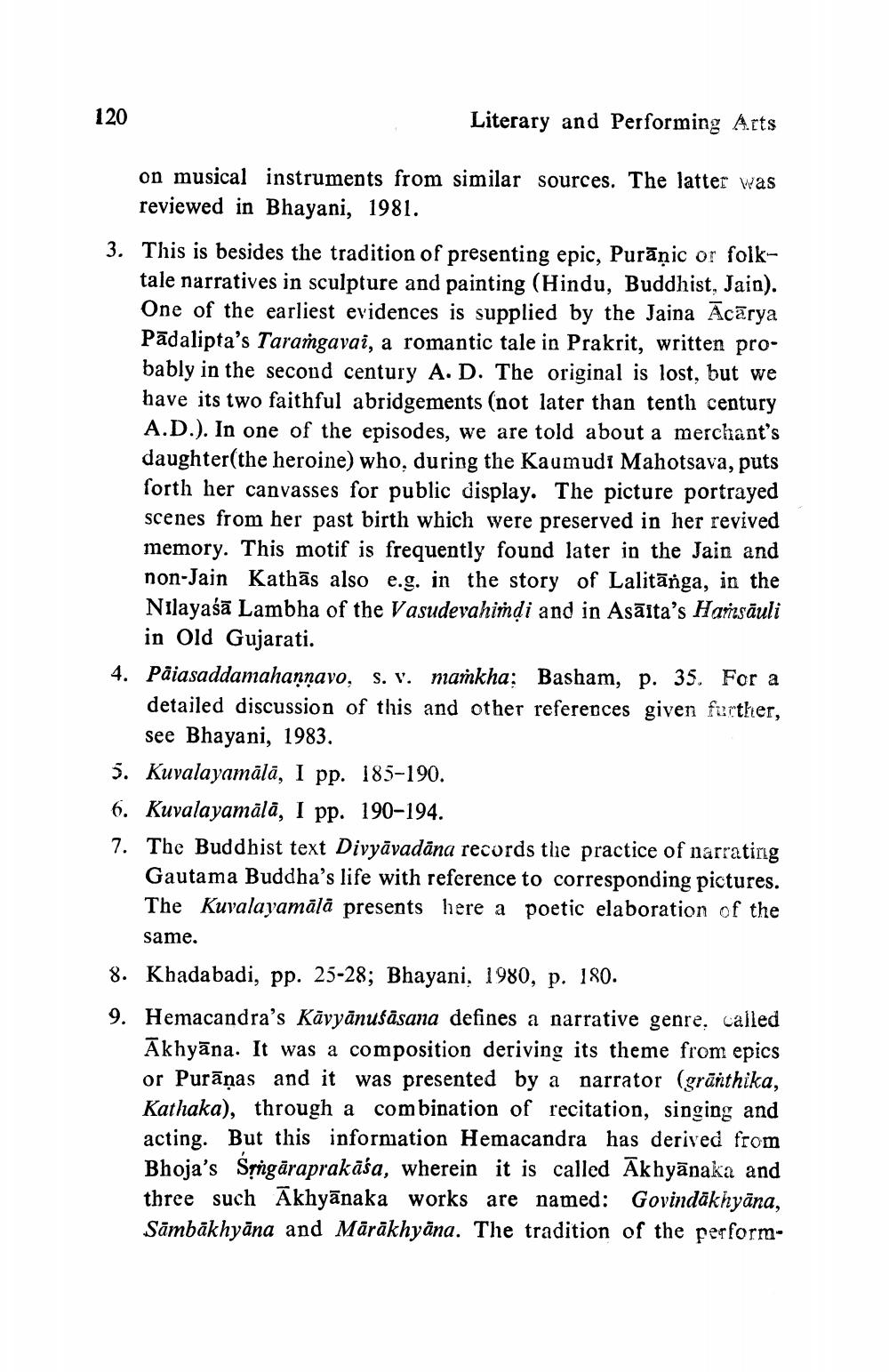________________
120
Literary and Performing Arts
on musical instruments from similar sources. The latter was reviewed in Bhayani, 1981.
3. This is besides the tradition of presenting epic, Puranic or folktale narratives in sculpture and painting (Hindu, Buddhist, Jain). One of the earliest evidences is supplied by the Jaina Acarya Padalipta's Taramgavai, a romantic tale in Prakrit, written probably in the second century A. D. The original is lost, but we have its two faithful abridgements (not later than tenth century A.D.). In one of the episodes, we are told about a merchant's daughter(the heroine) who, during the Kaumudi Mahotsava, puts forth her canvasses for public display. The picture portrayed scenes from her past birth which were preserved in her revived memory. This motif is frequently found later in the Jain and non-Jain Kathas also e.g. in the story of Lalitanga, in the Nilayaśā Lambha of the Vasudevahimḍi and in Asāita's Haṁsāuli in Old Gujarati.
4. Päiasaddamahanṇavo, s. v. mamkha; Basham, p. 35. For a detailed discussion of this and other references given further, see Bhayani, 1983.
5. Kuvalayamālā, I pp. 185-190.
6. Kuvalayamālā, I pp. 190-194.
7. The Buddhist text Divyāvadāna records the practice of narrating Gautama Buddha's life with reference to corresponding pictures. The Kuvalayamālā presents here a poetic elaboration of the
same.
8. Khadabadi, pp. 25-28; Bhayani, 1980, p. 180.
9. Hemacandra's Kävyänusāsana defines a narrative genre, called Akhyāna. It was a composition deriving its theme from epics or Purāņas and it was presented by a narrator (granthika, Kathaka), through a combination of recitation, singing and acting. But this information Hemacandra has derived from Bhoja's Śṛngāraprakāśa, wherein it is called Akhyanaka and three such Akhyānaka works are named: Govindakhyāna, Sāmbākhyāna and Mārākhyāna. The tradition of the perform




